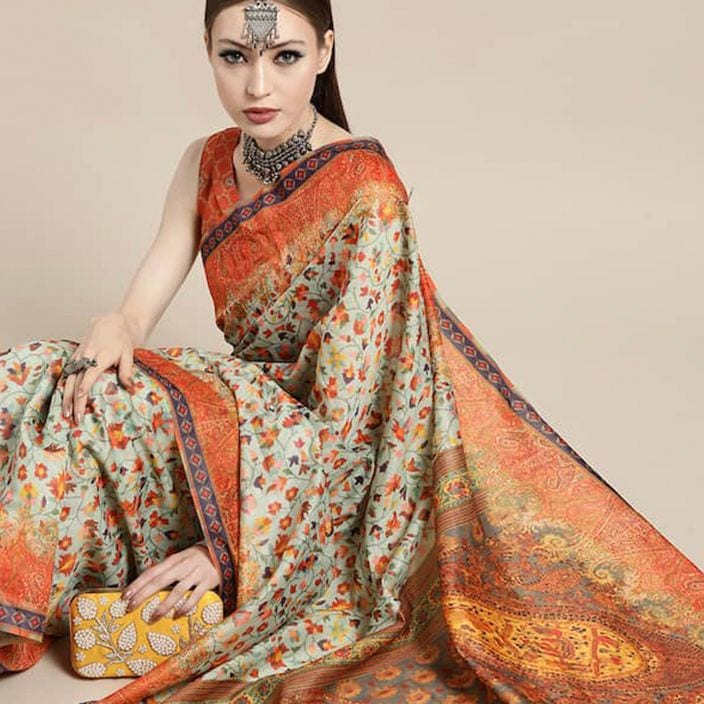For best prices and early deliveries, WhatsApp us at. 918488070070
Telangana
Once the land of the Nizams, home to rich textiles and truly diverse cultures- Telangana is more than just the Qutub Minar row. The state of Telangana might have attained official geographical and political recognition only back in 2014, but its existence and history have been noted since the Mughal era and beyond. Situated in the Southern part of India, on the Deccan Plateau, it is the eleventh largest state in the country. Besides its capital city of Hyderabad, Andhra Pradesh, Telangana includes other ancient cities like Nizamabad, Warangal, and Karimnagar, which the wealthy Nizams once ruled. This vast region is one of the most ancient locations on the map of India; Once ruled by the greatest of dynasties like the Satavahanas, Kakatiyas, Cholas, and of course, the Delhi Sultanate- Telangana has a rich and fascinating history that gives birth to an equally rich culture. Earlier, the region was called “Telugu Angana”, as to separate its Telegu-speaking population. But later, the name Telangana was attained as a reference to the word “Trilinga”- referring to the three “lingams” (parts) of Lord Shiva found here, according to Hindu mythology. Due to the influences of dynasties, troops, and religions, Telangana is abundant in art and culture dating back centuries! The pride of Telangana textiles lies in the Gadwal saree, which is almost 200 years old. Golconda is a famous style that belongs to the 16th-century Deccan sultanate. This originated from the Qutub Shahi reign and has been a part of museums around the globe.
Traditional Clothing In Telangana
Women
Being a part of Southern India, the traditional attire for Telangana women is similar to other southern regions of India. Silk is the most significant textile here. This fabric is thus, given shape and formed into different garments, amongst which the saree is the most noteworthy. The traditional Gadwal saree is the most celebrated piece of clothing in Telangana. These fine-quality sarees are preferred for their intricate gold borders and motifs on the pallu, usually made in colours contrasting to the entire body of the saree. While a saree is the usual six-yard-long fabric ready to be draped, another Telangana traditional classic is the Langa- Voni, also known as lehenga-saree. This flattering ensemble consists of a flowy skirt called the lehenga, a blouse, and a long dupatta wrapped around the body and tucked into the skirt to give an illusion of a saree. This style has been a traditional costume for Telangana women for many years. A langa-voni can now be widely seen and recognized, even in movies and worn by celebrities.
Traditional Attire for Men:
As mentioned above, Telangana has been a state of diverse culture. For the men belonging to the Hindu community, the pancha or dhoti is Telangana traditional attire. This is worn with a kurta, conventionally made of pure cotton and occasionally of silk- an addition to this is an angavastram, a short scarf worn on the shoulder. An authentic pancha is white with a golden border.
On the other hand, the influence of the Mughals is responsible for the evolution of the Sherwani. This piece of clothing is a knee-length coat, tailored on rich fabrics and embellished with embroidery. This ensemble was originally famous amongst the Muslim aristocrats and royalty, like the Nizams of Hyderabad but, with time, the telangana dress style was taken up widely by the population due to its attractive appeal.
Staple Jewellery & Accessories
Most of the traditional and historic pieces of jewellery in Telangana come from the capital city. Hyderabadi jewels are a major attraction not only in India but all around the world. Famous for their Mughal influence in designs and style, these are truly one of a kind! As one may already know, Hyderabadi pearls are world-renowned and play a significant role in Telangana’s jewel industry. The famous jadau jewellery owes a substantial part of its origin to the Nawabs of this region. Traditional jadau jewellery is intricately made on gold with hand-set precious stones and pearls.
Some prominent pieces include the Mang Teeka and jhoomar worn by brides. According to the old saying, the teeka is made in the shape of a shield, signifying that the groom must act as a shield to protect his wife against all odds.
Whereas, the jhoomar is a triangular-shaped, three-tiered ornament worn on the left side of the forehead, also known as, pasa.
Royal influence is evident in pieces like the “Saath Lada,” meaning seven. It is a long necklace with seven layers of pearl strings. Each strand has a pendant hanging in the center. This is the most popular piece of Hyderabadi jewellery.
